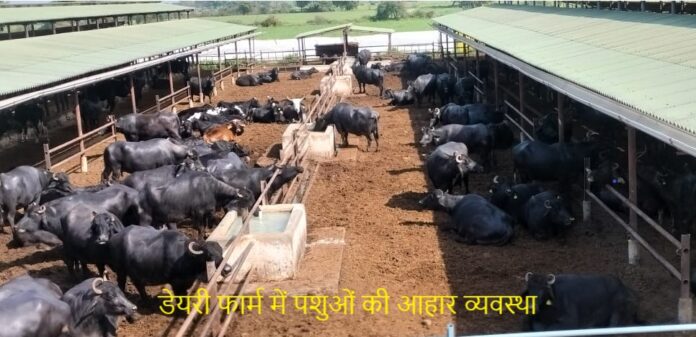Low Productivity of Dairy Animals of Indian subcontinent: Strategies related to various challenges.
Amandeep Singh
Assistant Professor, Department of Veterinary Anatomy
Lala Lajpat Rai University of Veterinary & Animal Sciences (LUVAS), Hisar-125004, Haryana
Introduction
India is the world’s greatest producer and user of dairy products, consuming virtually all of its milk production. With demand for both cattle and buffalo milk, India’s dairy business is unusual in comparison to other dairy-producing countries. Despite becoming the world’s largest producer of milk with 230.58 Million Tonnes milk (Annual Report 2022-23), India still struggles with low production of milch animals (3.44 Kg/day). The average milk output per cow is quite low, with the vast bulk of India’s milk production sold as fluid milk. As a result, the industry is at a crossroads, with enormous opportunities for overall value creation and expansion.
Challenges
- Shortage of feed/fodder: In terms of feed and fodder usage, unproductive dairy animals compete in equal numbers with productive counterparts. Urbanization and industrial development reduce the total grazing area year after year. This causes a lack of feed and fodder in the context of total demand, raising fodder costs and resulting in inadequate feeding. The ever-increasing demand-supply mismatch limits total milk output. Poor quality forage, along with the lower purchasing power of small, marginal dairy farmers and agricultural labourers involved in the dairy business, exacerbates the problem.
- Breeding method: The majority of Indian cattle breeds are prone to late maturity. Cattle owners lack a reliable and effective system for detecting heat symptoms during the oestrus cycle. The calving interval (the period between the birth of one calf and the birth of the next calf from the same cow) is increasing, lowering animal performance. Abortion-causing diseases, as well as mineral, hormone, and vitamin deficiencies, cause fertility issues and have an impact on the sector.
- Education and Training: Providing scientific education and training on appropriate dairy practices is crucial to address current difficulties. They must be adequately advertised to increase participation in such initiatives. Education and training for all dairy industry personnel are becoming increasingly important in developing a sense of ownership and instilling proper knowledge of best practices. Implementing such programs in the dairy business necessitates strong, unwavering commitment from management, which might be a stumbling obstacle.
- Health: Access to veterinary health care centers can be challenging due of their remote locations. There are fewer veterinary institutions in relation to the cattle population, resulting in poor health care for these animals. Irregular vaccination schedules and deworming regimens cause high mortality in calves, particularly buffaloes. As previously stated, cattle lack enough immunity, making them susceptible to disease.
- Hygiene:Cattle owners often fail to provide enough shelter for their animals, leaving them vulnerable to harsh weather conditions and natural elements. Cattle sheds and milking yards are unsanitary, resulting in mastitis. (This occurs when the udder tissue or mammary glands become inflamed because of physical trauma or microbial diseases. It is the most frequent disease in dairy cattle in the United States and around the world. Unsanitary milk production also results in poor quality milk storage and the spoiling of milk and other dairy products.
Mitigation
Standard Operating Procedures (SOPs) in the dairy industry serve as instructional roadmaps for all dairy activities. Dairy enterprises around the world employ process automation to address the inadequacies of traditional approaches. Dairy consultants aim to guarantee that SOPs and process automation covers the following facets of dairy enterprises,i.e.
1. General herd health management, including immunization and treatment.
- Reproduction management (delivery using timed AI procedures)
3. Milking management (procedures, parlour setup, cleaning, and cleanliness).
4. Veterinary Assistance
5. Productivity management (which includes breed selection and tracking)
6. Feed management, including newborn calves.
7. Waste handling, including newborn calves.
8. Maintenance crew
9. Organizational plan (including manpower utilization)
10. Production and supply chain safety.
11. Location management (diagrams or maps showing where animals and facilities are positioned)
Conclusion:
Artificial intelligence can help manage breeding programs and track animal progress. Innovative heat sensing techniques can boost conception rates by inseminating animals at optimal times. Using sexed semen and embryo transfer techniques can increase the number of female calves. Conservation programs for indigenous breeds can create a population of resilient animals that can tolerate harsh weather conditions, unlike exotic and crossbred species. Farmers should be encouraged to rear buffalo because they are more suited to the Indian environment and do not contribute to the country’s rising stray cattle population, which is a serious issue. NDDB created INDUCHIP for cattle and BUFFCHIP for buffalo to assess the breeding value and production potential of young bull calves and heifers during early selection. NDDB proposes distributing bulls for semen output based on genetic quality.



